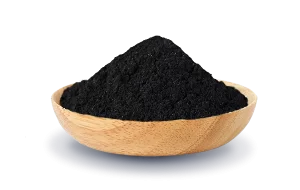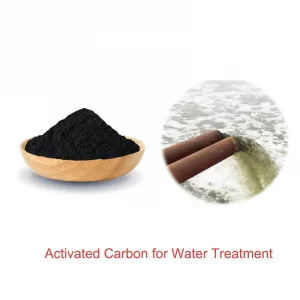Table of Contents
- Introduction
- What is COD and Why It Matters
- How Activated Carbon Removes COD
- Benefits of Activated Carbon for COD Removal
- Limitations and Risks of Activated Carbon Use
- Best Practices for Effective COD Reduction
- Conclusion
Introduction
Chemical Oxygen Demand (COD) is a crucial indicator of water quality, reflecting the amount of organic compounds present in wastewater. High COD levels indicate high concentrations of pollutants, which must be treated before the water can be safely discharged or reused. Among the most effective and widely used materials for reducing COD in water treatment processes is activated carbon. This article explores how activated carbon works to reduce COD, its advantages, limitations, and best practices for optimal performance.
What is COD and Why It Matters
COD measures the oxygen required to chemically oxidize organic matter in water. It’s an essential parameter for:
- Assessing pollution levels in industrial and municipal wastewater.
- Meeting regulatory standards for water discharge.
- Protecting aquatic ecosystems and public health.
Reducing COD not only ensures environmental compliance but also enhances the overall efficiency of downstream water treatment processes.
How Activated Carbon Removes COD
Activated carbon is a porous material with a vast surface area and high adsorption capacity. It works through two primary mechanisms:
- Physical Adsorption: Organic molecules are trapped in the micro- and mesopores of activated carbon through van der Waals forces.
- Chemical Adsorption: Certain functional groups on the carbon surface interact with organic pollutants, enhancing retention and degradation.
Activated carbon effectively removes:
- Dissolved organic matter
- Color-causing substances
- Ammonia nitrogen (NH₃-N)
- Nitrite (NO₂⁻) and nitrate (NO₃⁻)
- Odorous compounds
This broad-spectrum removal capability makes activated carbon an ideal material for lowering COD in various types of wastewater.
Benefits of Activated Carbon for COD Removal
- High Adsorption Efficiency
- Rapidly reduces COD levels even in heavily polluted wastewater streams.
- Improves Water Clarity and Quality
- Removes pigments, odors, and dissolved organics for visibly clearer water.
- Enhances Downstream Processes
- Pre-treated water with lower COD reduces load on biological or chemical treatment units.
- Safe and Simple Operation
- Easy to integrate into existing systems with minimal operational training.
- Regeneration and Reusability
- Depending on the application, activated carbon can be regenerated for multiple cycles, lowering long-term costs.
Limitations and Risks of Activated Carbon Use
While activated carbon is highly effective, it does have some limitations:
- Selective Adsorption: It targets organic pollutants but does not effectively remove heavy metals or complex organic compounds.
- Potential for Secondary Pollution: Improper handling or saturation can lead to the release of previously adsorbed contaminants.
- Efficiency Depends on Water Quality: Poor water quality (high turbidity, suspended solids) can clog pores and reduce adsorption efficiency.
- Requires Regular Monitoring: Activated carbon performance must be routinely assessed to avoid saturation and breakthrough.
Best Practices for Effective COD Reduction
To achieve optimal results when using activated carbon for COD treatment:
- Choose the Right Carbon Type: Granular activated carbon (GAC) or powdered activated carbon (PAC) based on system design.
- Pre-Treat Water: Remove suspended solids and debris before carbon filtration.
- Monitor Usage Time: Establish breakthrough curves and replace carbon before adsorption capacity is exhausted.
- Optimize Contact Time: Ensure sufficient retention time for maximum adsorption efficiency.
- Combine with Other Treatments: Pair with biological or membrane systems for comprehensive wastewater management.
Conclusion
Activated carbon is a powerful, proven solution for COD reduction in wastewater treatment. It offers a cost-effective, efficient, and scalable method to meet water quality standards and protect the environment. By understanding its working principles, benefits, and limitations, industries and municipalities can optimize their treatment systems for better outcomes. However, responsible use and regular maintenance are key to maximizing its effectiveness and avoiding secondary pollution.
Article Keywords: COD removal activated carbon, activated carbon wastewater treatment, reduce chemical oxygen demand, organic matter adsorption, water clarification, activated carbon filtration COD, ammonia nitrate removal, wastewater treatment best practices COD, industrial water purification COD, efficient COD reduction, activated carbon for water quality, lowering COD in effluent, granular activated carbon COD.



